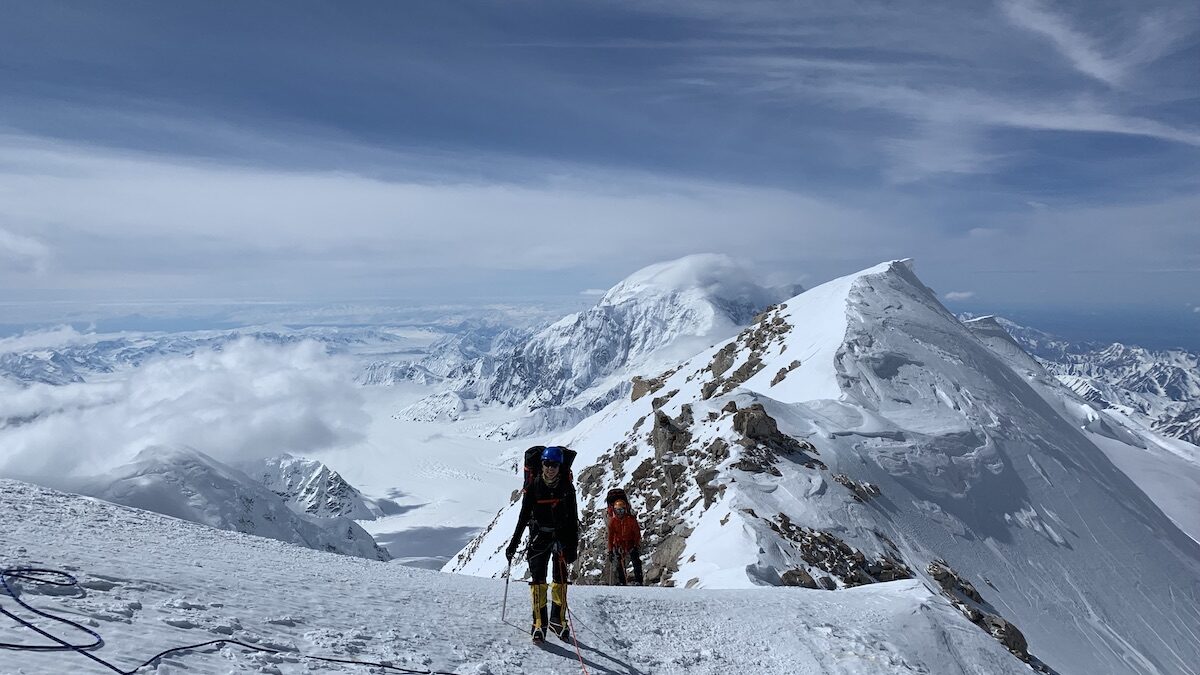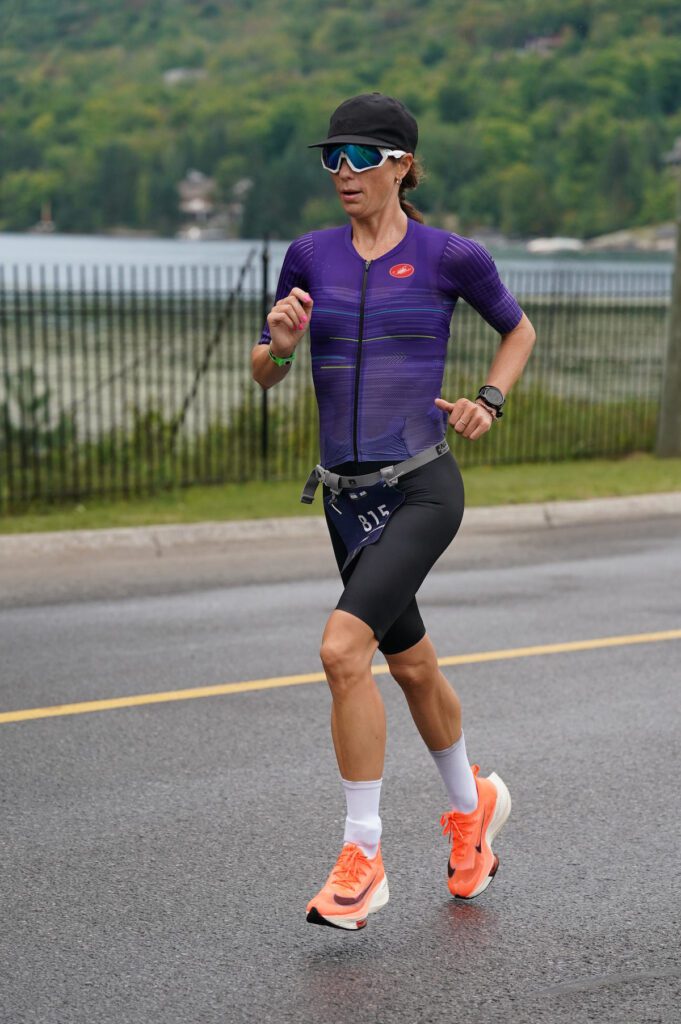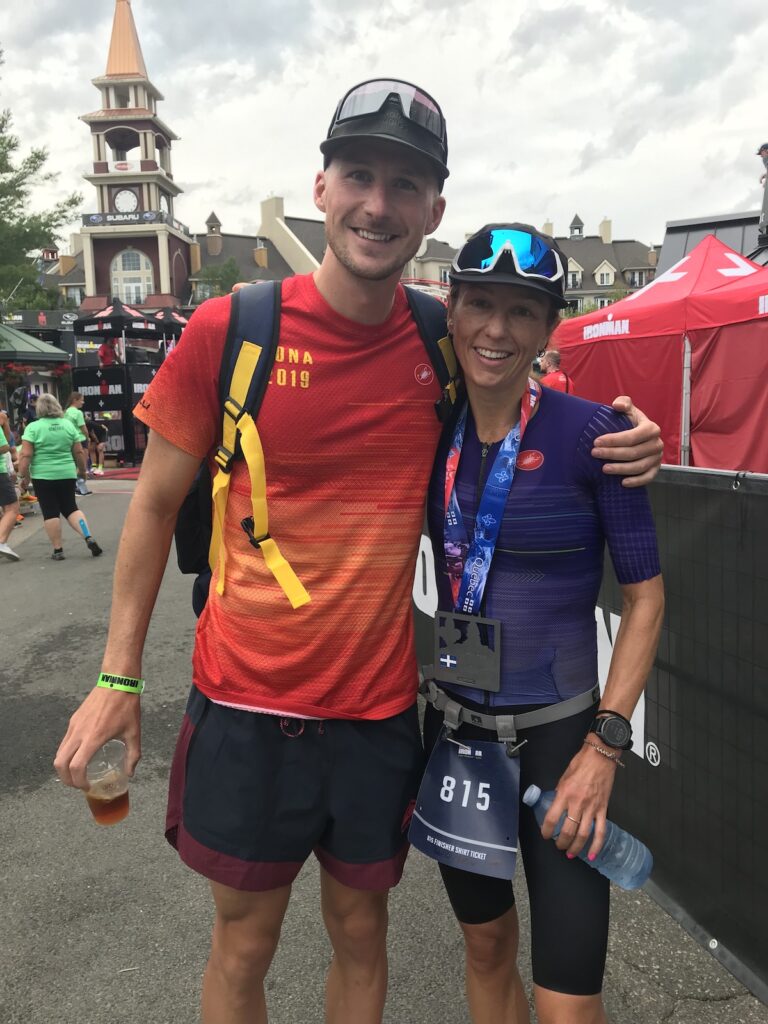She ended up in hospital after her first triathlon. She qualified for Kona in her next
This first-time triathlete set out to conquer her fear and ended up qualifying for the Ironman World Championship

Catherine Leblanc could be forgiven for never dipping a toe in the water again after her first triathlon in Mont-Tremblant last June.
“It was a horror show,” says Leblanc, without irony. Unused to the feeling of being so constricted in a tight wetsuit, butterflies in her stomach before she took her first stroke, she made it through the first 400 metres of the swim before panic set in.
Hyperventilating, she paused for a moment, remembering the advice of her coach and boyfriend, Elliot-Olivier Pellerin.
“I took a deep breath — and I swallowed half the lake!” she recalls, laughing.
A paddleboard was at her side in an instant, as she sputtered and coughed and finally threw up her breakfast. Determined to keep going, Leblanc assured the volunteer she was fine to continue — ultimately crossing the Ironman 70.3 finish line in a respectable 5:35:35.
“When I got there, I thought, ‘That’s it for me,’” she said. Everyone around her was celebrating: Leblanc’s brother, Simon, had come in 12th overall, the first age-grouper to finish. Elliot had won his 35 to 39 age group, and his younger brother Lawrence came in just 23 minutes behind him. Even Lawrence’s girlfriend, Marion Loranger, had finished the race in just over six hours, although she’d only signed up 24 hours before, never having swum in open water, nor biked a full 90 kilometres in her life.
Leblanc joined them all in toasting each other’s accomplishments, but she still didn’t feel well, finally heading to the hospital the next day when she found herself struggling for breath simply climbing the stairs. The diagnosis: swimming-induced pulmonary edema (SIPE), where fluid pools in the lungs. There is little talk about SIPE in triathlon circles, but the medical literature is replete with accounts of young, fit people — Navy-trained scuba divers, snorkellers and, yes, triathletes — diagnosed with the condition after an open-water swim where they experienced chest tightness, shortness of breath and a feeling that they were drowning. The symptoms are often triggered by cold water and by a tight-fitting wetsuit. And while SIPE usually resolves itself within 48 hours, it can be recurrent, and life-threatening.
Leblanc was admitted to hospital and kept under observation overnight. After her release, she faced a looming question — what about Ironman Mont-Tremblant, less than eight weeks away?
“What do I do? Keep going, or not?” she asked herself.
Leblanc is not the type to panic — nor to quit. She is an air traffic controller, with the requisite nerves of steel, and a mountaineer who spent June, 2019 at the Mount Everest base camp and, among other feats, once scaled Alaska’s Denali, the highest mountain in North America (photo above).
Related: Age is just a number – how this 78-year-old became the oldest woman to finish the Ironman World Championship

“That was a 21-day expedition,” Pellerin says, with pride. “The guys she was with, who were much stronger than she is, had to abandon it. She made it to the summit with her two guides.”
Indeed, if it were not for the pandemic curtailing international travel, Leblanc might never have gotten around to competing in a triathlon — nor embarking on a romance with a guy just about as gritty and determined as she is. She and Pellerin had met at Montreal’s Collège Brébeuf as teenagers, but they hadn’t seen each other in 15 years before crossing paths again in 2020. By chance, Pellerin, who works as a marketing executive for Loto-Québec and has a side business as a triathlon coach, had befriended her brother after meeting him in the finishers’ tent at Mont-Tremblant in 2019. He’d gone on to coach Simon to an age-group win at Ironman Lake Placid in 2021.
Within months of reconnecting, she and Pellerin were living together. Leblanc quickly became a Zwift fanatic — and unavoidably exposed to the training regimes of the triathletes she was now surrounded by.
“I was very curious,” Catherine says. “I wanted to be able to speak their language, to understand what Simon and Elliot were going through. Triathlon is such a big part of their lives.”
Back in 2016, she had run the Boston marathon, having qualified in her very first marathon in Ottawa. Still, she found the idea of conquering an Ironman intimidating — and after her traumatic experience in June, petrifying.
Related: Given 5 years to live, Patrice Brisindi is making the most of his Ironman race time

But Pellerin had no doubt about Leblanc’s promise as a highly competitive triathlete and her ability to overcome adversity.
“We were training at a very high level,” he said. “We had been going out on big bike rides, big runs, and it had gone super-well.”
“She had to build back her self-confidence. You have no idea what kind of discipline that took. She did everything she could, despite her doubt and uncertainty and fear — fear that was borderline phobia.”
The pair proceeded to find out everything they could about swimming-induced pulmonary edema and how to prevent it from happening again. That involved meditation, a lot of reading and consulting physicians and online resources, and many, many kilometres of open-water swimming.
“It was all about the swim. We were swimming more than 10,000 metres a week,” said Pellerin.
Pellerin’s fellow coach and accomplished triathlete, Gilbert Ayoub, suggested trying a different wetsuit, and if that didn’t work, ditching it entirely. So, before the full Ironman event, Leblanc borrowed Pellerin’s mother’s sleeveless one, which felt much less constricting. By the time race weekend arrived, she felt ready.
“The night before the race was really stressful,” Leblanc recalls. “We did a lot of visualization. I told myself, ‘You have done what you needed to do. Now you just have to go out there and do it.’” Her brother surprised her, making the five-hour drive to Mont-Tremblant from Quebec’s Beauce region, where he runs a bike shop, to be there for her first Ironman. “Simon said to me, ‘You just have to concentrate on the swim.’ I said, ‘As long as I can get out of the water, the rest is going to be fun!’”
And it was.
Leblanc made it out of the water in 1:07:46, then biked and ran a spectacular race, despite some minor nutritional issues and a cold, wet slog through a downpour early in the bike leg. She finished in 10:07:46 — good enough for second place overall among female age-groupers, behind Surrey, B.C.’s Deborah Eckhouse.
Pellerin, the top age-grouper in the race, was waiting for Leblanc at the finish line, having clocked in at 9:09:04. Both were on their way to Kona.
Leblanc credits her brother, her parents and her boyfriend’s parents for their support and faith in her.
“This was really a family affair,” she says.
Most of all, she credits Pellerin. With so little racing experience, and after the trauma she’d experienced in June, she’d placed all her trust in him.
“I was training blind,” she says. “He passed on to me everything he’d learned, which is a lot after 10 Ironmans and now four trips to Kona.”
Turning to him, she says, “I just did what you told me to do, and I knew you were there for me.”
“She is so strong,” Pellerin responds. “And she has such mental strength — you have no idea.”
I think we all have some idea now.
Catherine Leblanc finished the Ironman World Championship in 10:27:26, 12th in her age group.
This story originally appeared in the Nov. 2022 issue of Triathlon Magazine
